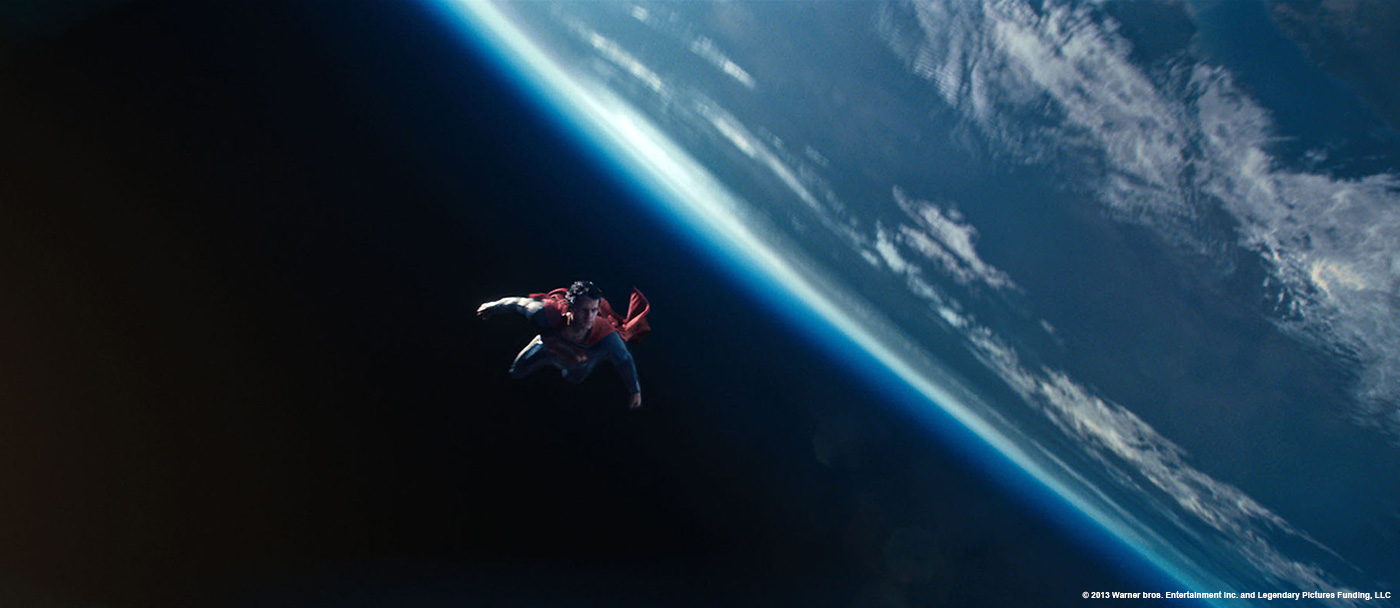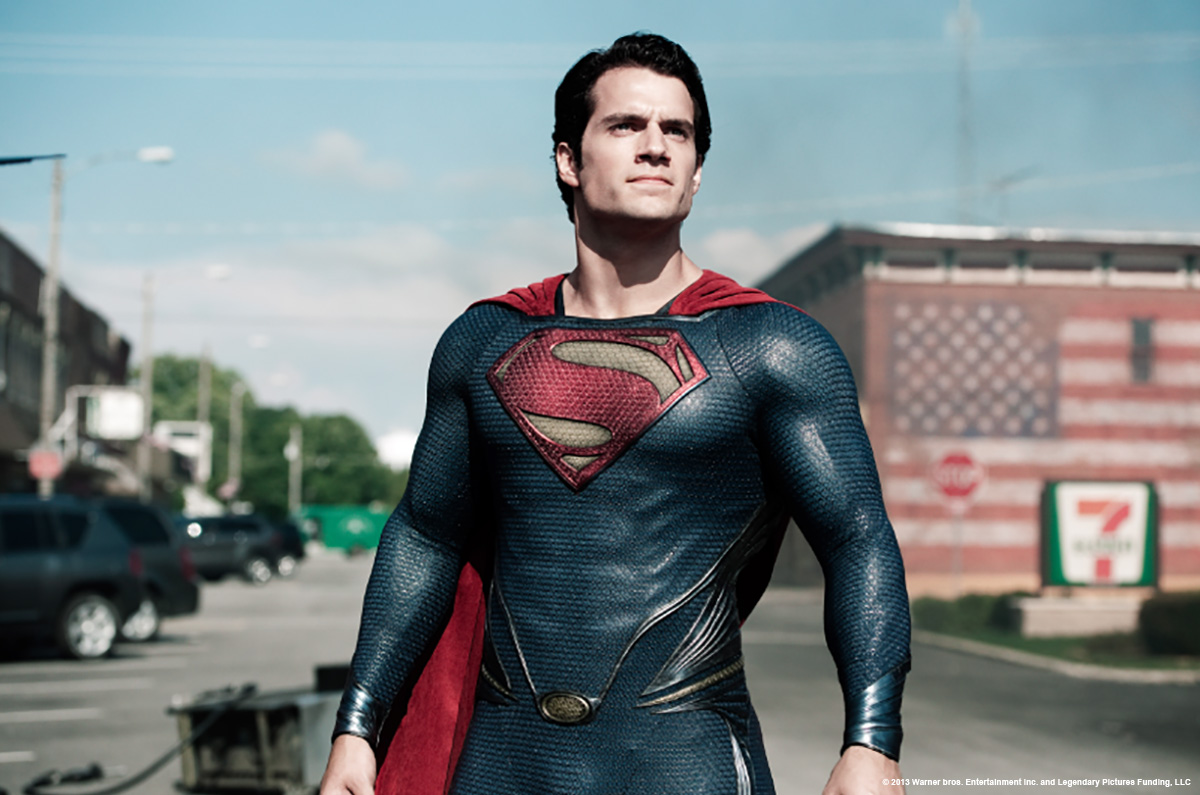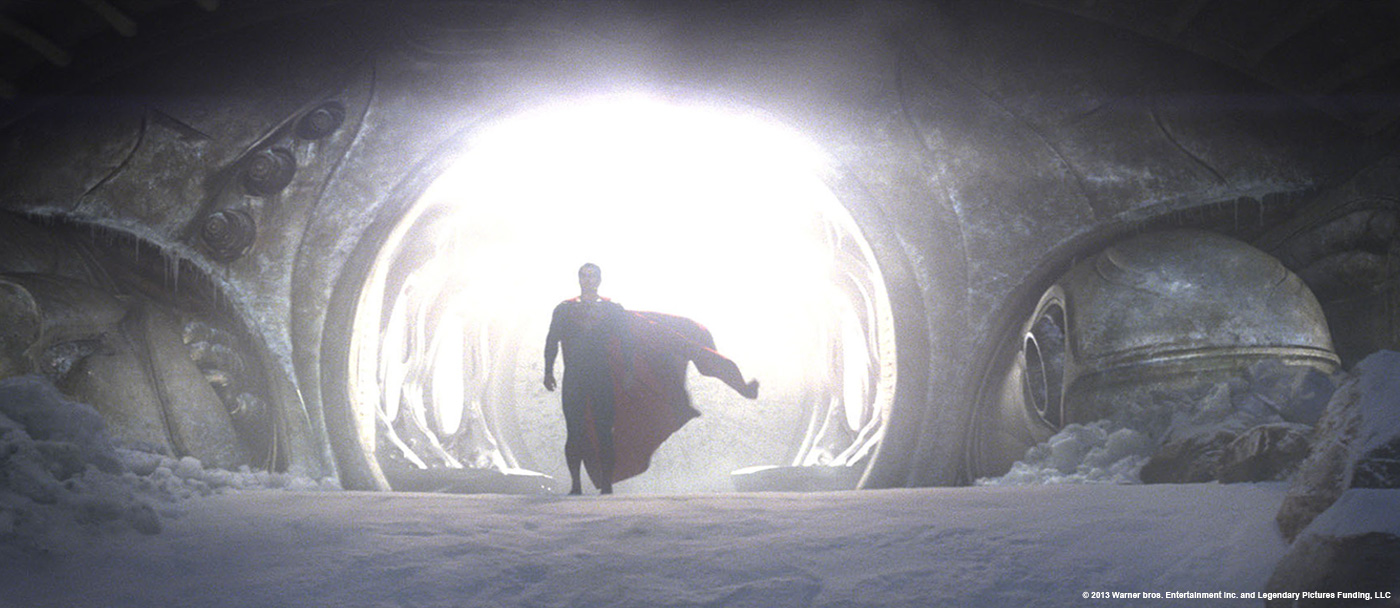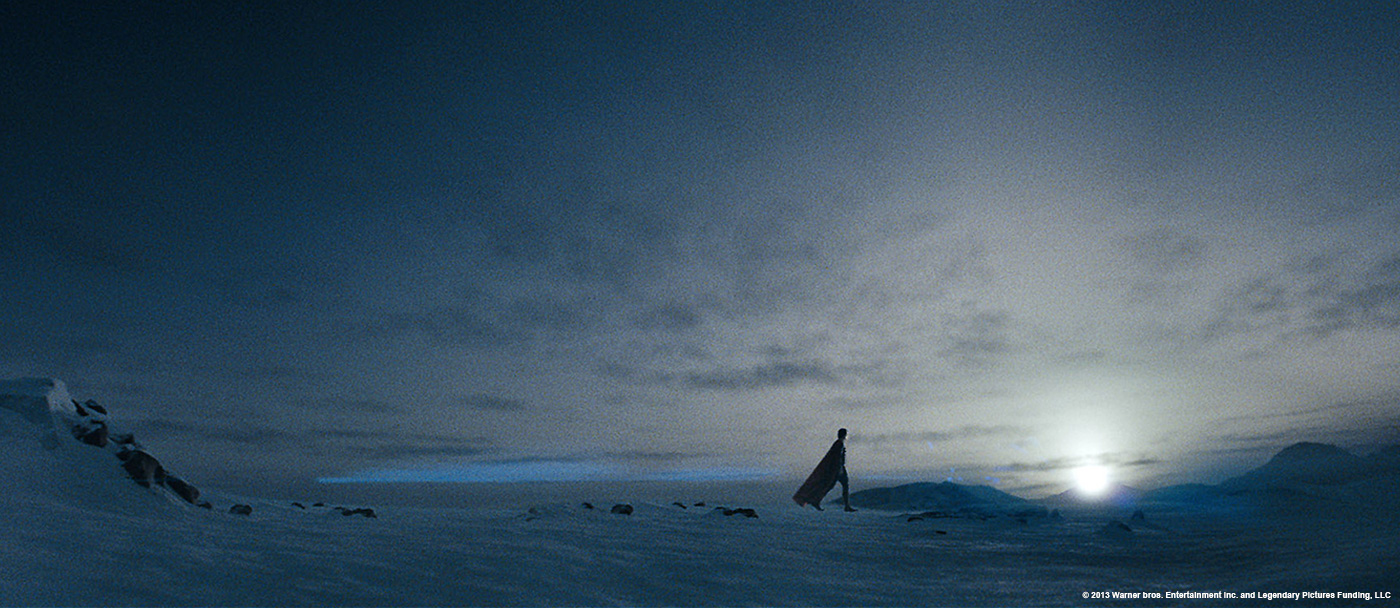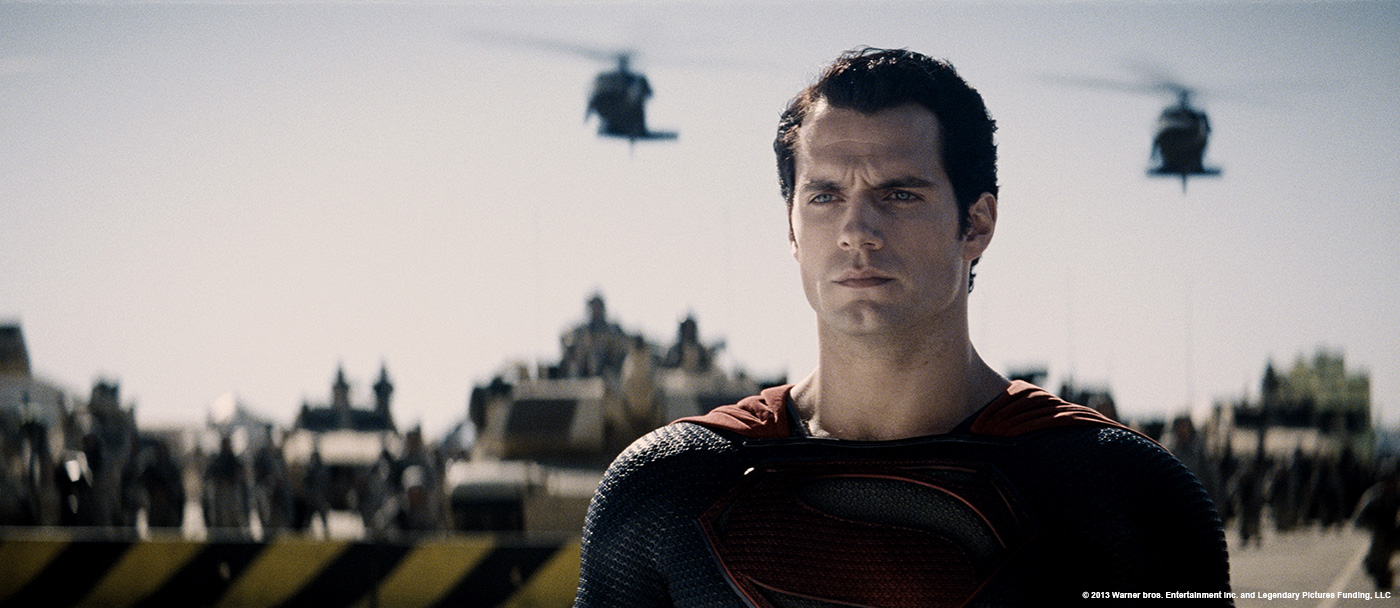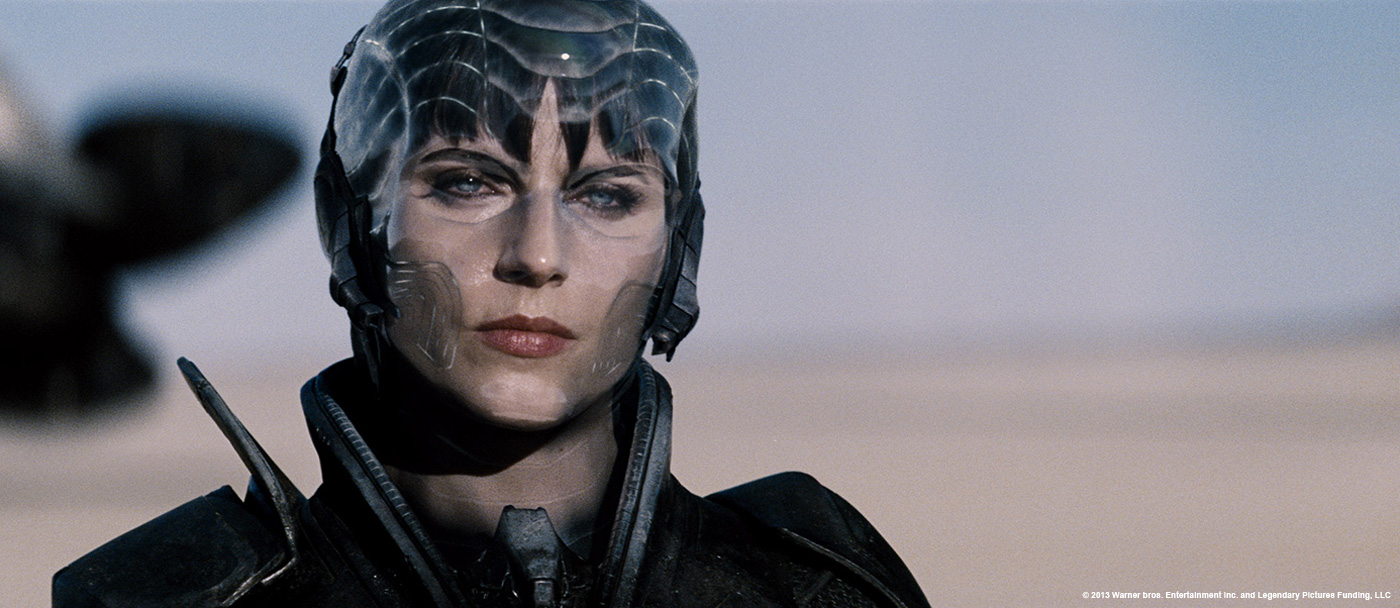Just before Christmas 2012, Guillaume Rocheron had explained to us his work on LIFE OF PI. Now he talks about the visual effects of MPC on MAN OF STEEL.
After SUCKER PUNCH, it’s your second collaboration with director Zack Snyder and Production VFX Supervisor John “DJ” Desjardin. Can you tell us more about this new collaboration?
Our previous collaboration was a great success so when we first started discussing the various challenges for MAN OF STEEL, we weren’t starting from scratch. What is great about working with the same group of people is that you have already a history in building up a common language and references, so we were able to get our heads straight into finding out how to best achieve what Zack wanted for this movie.
What was their approach about the visual effects?
Superman is a difficult character to relate to because he is not human so it was important for Zack to ground him in our world, while showing his capabilities.
Zack adopted a more naturalistic, documentary style approach, so the cameras would always be right with the characters and shots would be filmed from plausible places or devices. This really influenced how we approached the project and how we would design shots, which is something DJ and I spent pre-production time defining approaches and techniques such as the Envirocam. When Superman fights in the Smallville Battle, for example, it was important to see his reactions and emotions when he gets thrown 50ft making a big crater in the ground, keeping the camera close to him. The audience witnesses something clearly superhuman, but there is that little piece of live action photography injected in there that makes you feel that you are seeing it happen right in front of your eyes instead of just being some wide CG action shots.
What did MPC on this show?
Our main sequences were the Smallville Battle, Superman exiting the Fortress of Solitude and flying for the first time, Superman surrendering to the military and then the Kryptonians, the Lois Escape Pod rescue, the discovery of the Kryptonian Scoutship into the icecap, the dream sequence when Superman in on board the Black Zero and various flying shots throughout the movie.
How did you use the previs made by Pixel Liberation Front?
The previs made by Kyle Robinson and his team was crucial for the Smallville Battle. It was very challenging from a shot design stand point because of the intensive blend of live action pieces with CG connections between them. I remember shooting a shot of Superman and Faora fighting with a significant number of live action vignettes and complete CG takeovers that took us a while to capture because of the complexity and the number of different pieces of plates and Envirocams.
We watched the previs constantly with DJ to make sure we were progressing through the different pieces of the shot without missing anything out. Overall, combined with the stunt-vis designed by the stunt coordinator Damon Caro, it was a perfect guide to help us march our way through the shoot so we could deconstruct shots and identify what pieces needed to be shot, or what needed to be captured. I don’t think we could have executed our shots so well without it.
What is a typical day for you on-set and then during the post?
Days are very different between shooting and post! While shooting, you make sure the shots are setup according to what you need for a successful execution down the line and you are there to advise and consult as the day goes on. A shoot like the Smallville Battle was really involving because most of the shots required shooting live action vignettes that we would then piece together in post with CG takeovers.
In post, I work back at MPC reviewing the work of each department on the show. Because MPC is a multi-site facility, I would generally start the day with reviews of our London team’s work, led by Anders Langlands. For much of the rest of the day, I am in one of our screening rooms in Vancouver, reviewing the work that each Supervisor or Lead presents. With the help of Stephane Paris, the CG supervisor, Daryl Shawchuk, the animation supervisor and Christian Irles, the compositing supervisor, I reviewed the work of hundreds of artists during the day, making sure everybody keeps focus on the end result and the director’s vision while ensuring the work is up to the quality standards we strive to achieve. And of course, I would do Cinesync and Skype reviews with DJ every day, showing him our progress on the work and exchanging ideas on how to best tackle the shots we were creating for Zack.
Clark discovers a spaceship in the Arctic. Can you explain to us in details about its design and creation?
The Scoutship was designed based on illustrations provided by the art department. As all Kryptonian technologies, it has that very organic and profiled look, however this ship was supposed to be much older technology than what you see during the 1st act on Krypton as it’s been buried in the ice for almost 20,000 years. As we also created the Dropship, which is a more modern ship, we had a good comparison point to work out how worn out it should be, and how the thrusters system needed to be slightly more archaic.
The lighting scenario was pretty complex when Clark discovers the ship inside the ice cavern because we needed to be able to see it through the ice, while maintaining a good sense of scale. We generated the cavern with a mix of sub-surface scattering passes, making the ice subtlety illuminated by the drilling rig on the surface above, and reflection passes so we could outline and reveal the spaceship and the cavern, without too much direct lighting. We did a final pass of matte painting on top to bring in a lot of smaller details to help emphasize the scale.
How did you create the huge arctic environment?
The arctic environment in Superman’s first flight was shot on a 360 degrees greenscreen stage, with a snowy ground piece for him to walk on. Everything else was made with a combination of Terragen, enhanced with 2.5D matte paintings from our environment team. Terragen is a great tool for prototyping different features and lighting scenarios so we were able to block the shots pretty quickly before going through full detailing pass projecting photos.
How did you approach the iconic moment showing the first flight of Superman?
The environments Superman flies through are generally completely CG because it was important to have control over the camera moves and the shot design depending on Superman’s flight path and speed. As for the arctic environment, everything was generated from a Terragen base enhanced by projecting photographic details. It was particularly useful to generate miles of Utah canyons.
Superman himself is full CG on wide shots and a mix of live action and CG on the closeups. We used a rig called the Belly-Pant, which is basically a platform that the actor could lie on. Being a lot more comfortable and flexible than wire rigs, it allowed Henry to have very dynamic shoulder and arm movements, which was great performance wise. Because the rig covers most of his body, we roto-animated his performance and replaced it with our CG version with a CG cape, while keeping the face and hands. This was a good trade off since the rig allowed for the performances to be a lot more dynamic and physical.
This clip shows many flight scenes and Smallville fight
Can you explain more about the digital cape?
The cape is one of the most recognizable features of Superman’s silhouette. In the many illustrations done over the years, it is treated as an extension of his body that re-enforces his pose, giving him that iconic look. Just from looking at drawings, you can tell what speed Superman is moving at, if he is landing, hovering etc… Illustrator Alex Ross was one of our main reference because his illustrations really capture how the cape works in conjunction with the body pose.
For most shots, Zack shot Henry without his cape so we could add it digitally and control it’s shape and flow. During the first flight sequence, Superman exits the Fortress of Solitude, walking on the icecap at sunrise, and it was all about silhouette and flow. For the flight shots, we designed various cape shapes to re-enforce the speed Superman is flying at. For the battle shots, it was used to emphasize the action; when Superman crash lands for example, the cape flares which shows a change of speed while being pretty gracious and strong as a silhouette
We animated the cape like a character. Our rig allowed the animators to interactively set keyframes to control its shape and flow which was a great tool to flesh out what the cape needed to do. When you animate a CG version of Superman, a lot of the look and feel is created through the movement of his cape and it is something I didn’t want to leave as a process post animation. Once the animated cape was signed off, we ran it through our cloth solve that used the keyframes as a base layer to drive the final simulation.
How did you approach the Smallville Battle ?
The Smallville Battle was our biggest and most complex sequence because we had to come up with new solutions to allow Zack to film the Kryptonians and Superman using their super-abilities, close to the actors in this documentary style. The plan was to have the audience feel like they are witnessing everything, right on front of their eyes, and being able to see the actors reactions and emotions.
Because of the filming style, the camera had to follow the characters, whether they were just walking or flying at super speed. We didn’t have many wide establishing shots where you could get away with adding CG doubles easily because it just didn’t fit with how Zack wanted to bring that connection between the audience and the characters. The first question was “how do you film that?” To achieve this, we had to rely heavily on seamlessly blending live action and CG takeovers of the actors and the set.
During pre-production, DJ and I came up with a method of capturing the entire set on a shot per shot basis, with practical lighting, where we could 2.5D re-project it on geometry to create a perfect virtual replica of any given shot. We ended up calling the process Envirocam and it allowed us to seamlessly transition from a completely practical shot to a full CG shot because we had captured all the matching details and lighting. Using very high resolution digital doubles in combination with the Envirocam, we were able to execute those transitions, creating digitally movements that weren’t filmable and connecting various live action vignettes to construct each shot.
For example, as soon as Superman is punched 100 ft down the street we would transition to a digital shot with the camera following him, we’d then transition back to another live action vignette to zoom onto his face, and then as soon as he takes off to avoid another Kryptonian charge, we would go back to a CG shot. The whole process ended up being very successful as we could not only see the characters fighting full screen, but it was also a great way to frame the CG characters instead of trying to fit their actions within clean plates with pre-determined camera moves.
We also had to create an entirely CG character called Namek. He is an 8ft tall Kryptonian warrior, performed by a stunt actor in a performance capture suit. The destruction work put our finite element destruction toolkit, Kali, to good use having to deal with a lot of different types of materials and structure.
This trailer contains many Smallville battle shots and also helmets shots
How did you recreate the city and the vehicles?
We did some extensive photo shoots and 3d scanning of Smallville and the vehicles. We didn’t render a full 3D version of Smallville per say; it was done projecting Envirocams either for a specific shot or from our library so we could generate full CG shots. Each time you see something getting destroyed, it’s a full 3d rendered asset so we could use the dynamic lighting and interactions.
Faora is moving super-fast in a specific way. Can you tell us more about it?
When Faora moves, she has the ability to break the sound barrier. We had to do a lot of animation studies to get her motion to read nicely, as it can be very deceiving to watch something move that fast at 24 frames a second. There is a shot where she takes down 10 soldiers in a few seconds were we could add or take out a frame that would completely change the feel.
On a number of shots we would use our takeover approach, described previously, for transitioning between live action vignettes of her and the CG moment when she accelerates.
How did you create the various digital doubles?
Gentle Giant did some full body and head scans, that we finished with an extensive photo shoot. For Superman, we did a FACS capture session to record all of the face muscles movement. The digital characters had to hold up very close in frame as we would be transitioning in and out of the live action photography. We created very high resolution models and textures with full muscle rigs, cloth solves and dynamic displacements to capture the subtleties of the faces and also the suits and armour. Superman’s suit was interesting as it was a complex layering of chain-mail patterns and a blue fabric with more metallic material poking through in some places. Our raytracing and area lights based lighting system gave us a lot of precision in how each little piece would catch the light which helped make the suit come to life.
There a lot of destructions on Smallville sequence. Can you tell us more about the use of Kali?
Our R&D team, led by Ben Cole, wrote our proprietary destruction software Kali for the Samurai sequence in SUCKER PUNCH, as we needed a destruction system that could not only break things but would take each material’s properties into account. The system adds some truly amazing visual details as you have the ability to program whether a material is going to bend and crack, splinter, explode etc..
We’ve been using it on all of MPC projects since then, and it made sense to use it on MAN OF STEEL as there are so many different types of material being destroyed. From ripping up the tarmac to destroying the Kent’s barn to having Superman crash through brick and glass buildings to deforming the metal bank vault, it was all defined within Kali and gave us some very realistic looking surfaces while being extremely art directable.
The Kryptonians are wearing helmets. Can you tell us more about its design and creation?
The Kryptonian helmets were a fun piece of design to make. We received some illustrations from the art department but the challenge was to define how they would register in movement, since they were not supposed to be a solid surface but made of Kryptonian energy. We explored a number of different variations to find interesting ways for them to change their state from being opaque to transparent.
In the end, we decided they should have an actual surface, to make it clear to the audience that these were protective helmets. We kept a lot of the elements of flowing energy, forming a logical structure emitted from the spine that justifies the formation of what looks like being a continuous surface. This also allowed us to get the changes in transparency looking natural by balancing how much energy would run through the structures, ensuring they weren’t obtrusive to the actors faces.
Did you share assets with the other studios?
We didn’t share many shots but we did share the CG characters and spaceships. We were responsible for building the main CG Superman, Faora and Namek as well as the Dropship, Scoutship and Escape Pod and shared those with Weta and Double Negative. We received Zod’s base armour from Double Negative and went back and forth working together to refine the character.
How was split the work amongst the various MPC offices?
Our office in Bangalore handled the matchmove, roto and prep. The team in London took care of some of the asset builds, some set extensions for the arctic military base, most of the high altitude flying shots, including the Escape Pod rescue sequence. MPC Vancouver handled the Smallville Battle, first flight and dream sequences.
What was the biggest challenge on this project and how did you achieve it?
The biggest challenge was definitely finding ways to achieve that blend of live action and digital cinematography to stay true to Zack’s vision. We designed the Envirocam process during our pre-production phase so there was that leap of faith when we decides to go ahead with it, especially since it was the first show we had used it on.
Was there a shot or a sequence that prevented you from sleep?
Not really, thanks to the great team I had on the show!
What do you keep from this experience?
It’s really been a lot of fun to bring Superman back to the big screen and a real pleasure to work with Zack and DJ again.
How long have you worked on this film?
1.5 years from pre-production to final delivery.
How many shots have you done?
450.
What was the size of your team?
Across all MPC facilities, more than 250 people.
What is your next project?
I’m working on Gareth Edward’s GODZILLA.
A big thanks for your time.
// WANT TO KNOW MORE?
– MPC: Dedicated page about MAN OF STEEL on MPC website.
© Vincent Frei – The Art of VFX – 2013

